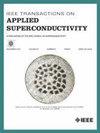Stacked Superconducting Cables With Coated Conductors Using New Corrugated Tubes for Electric Propulsion Systems for Aircraft
IF 1.7
3区 物理与天体物理
Q3 ENGINEERING, ELECTRICAL & ELECTRONIC
引用次数: 0
Abstract
In order to achieve a decarbonized society, aircraft must be equipped with electric propulsion systems. To achieve this, it is essential to reduce the overall weight of the electrical components. Therefore, one of the solutions to achieve this content is to apply superconducting technology to the propulsion system. In this case, superconducting coated conductors made of REBa2Cu3O求助全文
约1分钟内获得全文
求助全文
来源期刊

IEEE Transactions on Applied Superconductivity
工程技术-工程:电子与电气
CiteScore
3.50
自引率
33.30%
发文量
650
审稿时长
2.3 months
期刊介绍:
IEEE Transactions on Applied Superconductivity (TAS) contains articles on the applications of superconductivity and other relevant technology. Electronic applications include analog and digital circuits employing thin films and active devices such as Josephson junctions. Large scale applications include magnets for power applications such as motors and generators, for magnetic resonance, for accelerators, and cable applications such as power transmission.
 求助内容:
求助内容: 应助结果提醒方式:
应助结果提醒方式:


